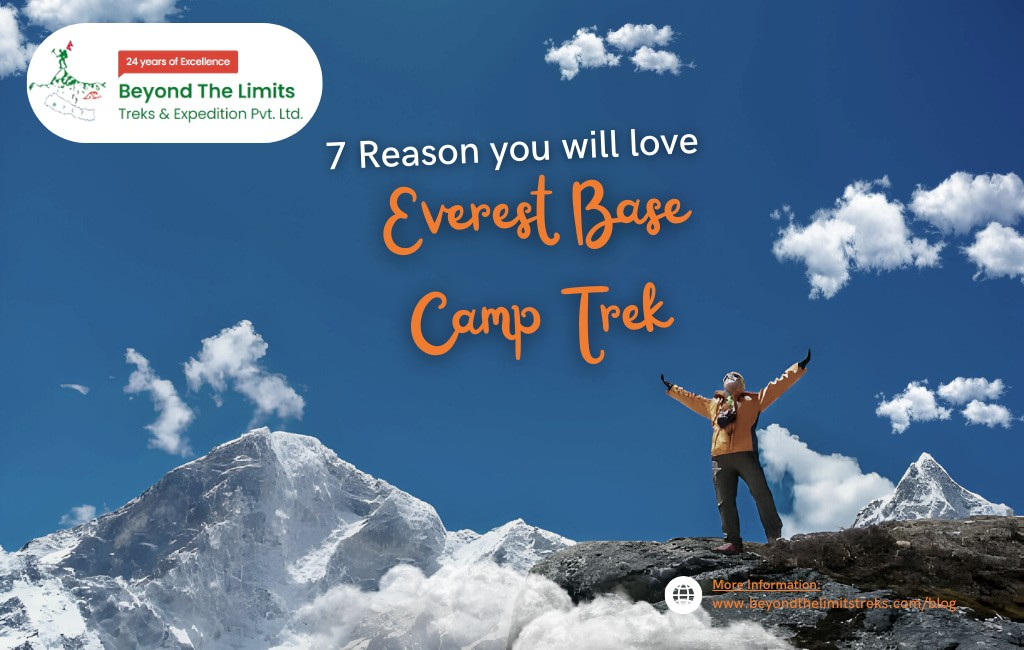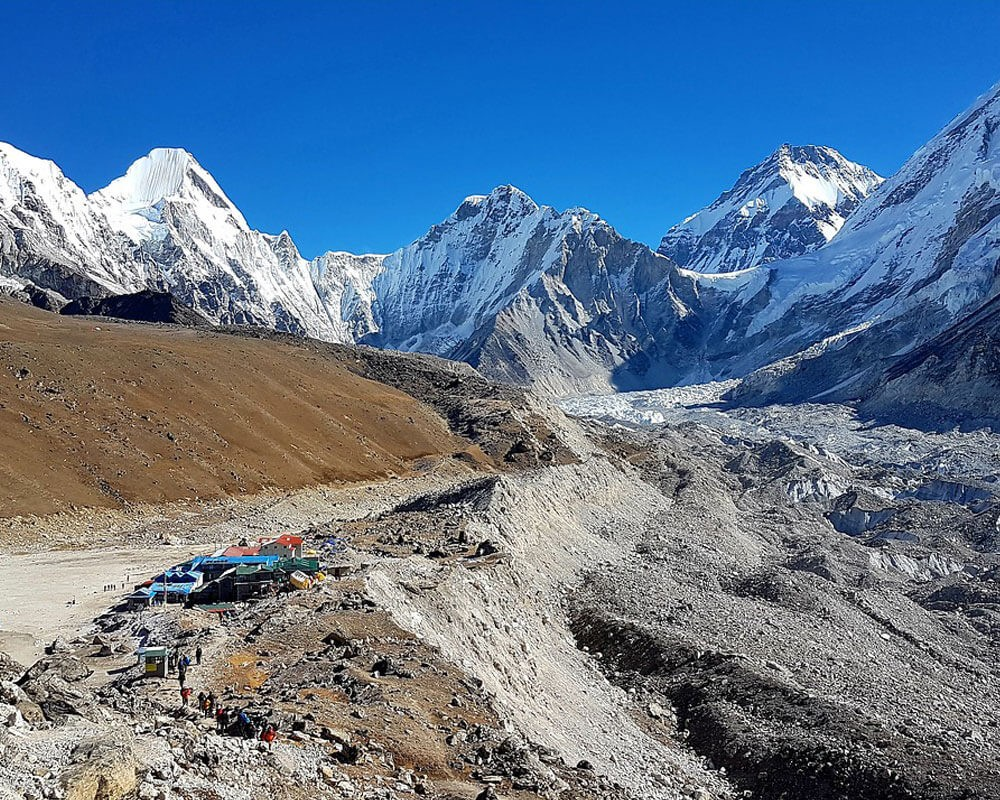The Everest Base Camp trek is one of Nepal’s most notorious experiences, advertising a mix of breathtaking scenes, wealthy Sherpa culture, and an elating sense of achievement. For numerous first-time trekkers, EBC is the extreme presentation of the world of high-altitude trekking. Settled in the heart of the Himalayas, the travel to the base of the world’s most noteworthy peak is as challenging as it is fulfilling. Whether you’re drawn by the appeal of Mount Everest or the charm of the Khumbu region, this trek guarantees an extraordinary experience.
Overview
The Everest Base Camp trek is a two-week trip that takes trekkers through the Khumbu Valley, famous for its marvelous mountain vistas and special social legacy. The trek starts in Lukla, a little mountain town accessible by an exciting flight from Kathmandu. From there, the course winds through pleasant towns like Namche Bazaar, Tengboche, and Dingboche, each advertising a view into the everyday lives of the Sherpa people.The path rises steadily, permitting trekkers to acclimatize to the expanding elevation. Along the way, you’ll navigate lavish rhododendron timberlands, cross suspension bridges embellished with colorful supplication banners, and experience cloisters that reverberate with centuries of Buddhist convention. The trek comes full circle at the Everest Base Camp (5,364 meters), where climbers get ready for their summit endeavors. For numerous reasons, the trek’s highlight is the climb to Kala Patthar (5,545 meters), a perspective advertising unparalleled, all-encompassing views of Mount Everest and its encompassing peaks.
Top Reasons to Select the Everest Base Camp Trek

1. Unparalleled Picturesque Beauty
The Everest Base Camp trek is a feast for the eyes. The path offers unhindered views of a few of the world’s most popular peaks, including Lhotse, Nuptse, Ama Dablam, and, of course, Mount Everest. Each day on the path brings modern and dazzling vistas, from verdant valleys to stark, snow-covered landscapes.
2. Wealthy Social Experiences
The trek gives an insinuating view of the Sherpa culture, known for its warmth and flexibility. Trekkers have the chance to visit old cloisters, such as the Tengboche Cloister, and take part in conventional ceremonies. The neighborliness of the neighborhood individuals is unparalleled, and their stories and conventions add a significant profundity to the trekking experience.
3. Available for First-Timers
While the EBC trek requires a great level of wellness and arrangement, it doesn’t include specialized climbing. The course is well-marked and upheld by a range of teahouses, making it sensible for people setting out on their first high-altitude trek. With legitimate acclimatization and direction, numerous first-time trekkers discover the encounter both achievable and enjoyable.
4. A Sense of Accomplishment
Reaching Everest Base Camp is a noteworthy accomplishment, one that clears out trekkers with a profound sense of pride and a story to share for a lifetime. Standing at the base of the world’s tallest mountain is a lowering, however engaging, encounter that few undertakings can match.
5. Natural Life and Normal Wonders
The trek passes through the Sagarmatha National Stop, a UNESCO World Legacy Location. The stop is domestic to different vegetation and fauna, counting Himalayan tahr, musk deer, and the slippery snow panther. Birdwatchers will be enchanted in spotting Himalayan monals and other outlandish species.
Everest Base Camp trek: Course, Highlights, and Tips

The Route
The standard EBC trek ranges around 130 kilometers (circular trip) and regularly takes 12-14 days.
Day 1-2: The travel starts with a flight to Lukla, taken after by a trek to Phakding. The other day includes a soak rising to Namche Bazaar, the dynamic center of the Khumbu region.
Day 3-4: Trekkers spend an acclimatization day in Namche Bazaar, investigating adjacent perspectives like the Everest See Inn. The trek at that point proceeds to Tengboche, home to the popular Tengboche Monastery.
Day 5-6: From Tengboche, the path leads to Dingboche, where another acclimatization day is fundamental. Trekkers can climb to Nagarjun Hill for staggering views.
Day 7-8: The travel advances to Lobuche and at that point to Gorak Shep, the final settlement some time recently at Everest Base Camp. A visit to EBC is the day’s highlight.
Day 9: The trek to Kala Patthar gives the best views of Mount Everest at dawn. Trekkers at that point start their plunge to Pheriche.
Day 10-12: The return trip follows the path back to Lukla for the flight to Kathmandu.
Highlights
Kala Patthar: The perspective offers a close-up view of Everest and a 360-degree display of the Himalayan giants.
Tengboche Religious Community: An otherworldly safe house with awe-inspiring views of Ama Dablam.
Namche Bazaar: An exuberant town with markets, pastry kitchens, and galleries, perfect for acclimatization and social immersion.
Everest Base Camp: The trek’s extreme goal, a bustling campsite filled with climbers planning for their ascent.
Tips for a Successful Trek
Prepare Physically: Prepare with cardio workouts, quality preparing, and climbing with a weighted rucksack to construct stamina and strength.
Acclimatize Continuously: Take rest days to adjust to the height, and tune in to your body. Side effects of Intense Mountain Affliction (AMS) ought to not be ignored.
Pack Shrewdly: Basics incorporate layered clothing, a great resting pack, trekking posts, and tough boots. Travel light but don’t hold back on essentials.
Stay Hydrated: Drink a bounty of water to combat parchedness and diminish the hazard of elevation sickness.
Hire Guides and Watchmen: Experienced guides give profitable experiences and guarantee security, whereas doormen help your stack, permitting you to center on the trek.
Respect Neighborhood Traditions: Appear in regard to the Sherpa culture and Buddhist conventions by taking after nearby etiquette.
Conclusion
The Everest Base Camp trek is more than fair travel; it’s a transformative involvement that brings you closer to nature, yourself, and the unyielding soul of the mountains. For first-time trekkers, it’s an experience that challenges and motivates, taking off an enduring engrave on the soul. From the excitement of coming to EBC to the quiet minutes spent among the peaks, the trek typifies the substance of the Himalayas. With cautious planning and an open heart, your trip to Everest Base Camp will be one of the most important undertakings of your life.
FAQs
1. What is the best time to trek to Everest Base Camp?
The best seasons are pre-monsoon (March to May) and post-monsoon (September to November). These periods offer clear skies and favorable trekking conditions.
2. Do I require an allowance for the trek?
Yes, you require two licenses: the Sagarmatha National Stop Section Allow and the Khumbu Pasang Lhamu Country District Allow. These can be orchestrated in Kathmandu or at the trek’s passage points.
3. How troublesome is the Everest Base Camp trek?
The trek is modestly challenging, requiring great wellness and mental assurance. Height is the essential challenge, but with legitimate acclimatization, it’s sensible for most trekkers.
4. Can I trek solo, or ought I enlist a guide?
While solo trekking is permitted, enlisting a direct is suggested for first-timers. Guides improve security, give important bits of knowledge, and help with grants and logistics.
5. What kind of settlement is accessible on the trek?
Teahouses give fundamental lodging and dinners along the course. They offer a cozy place to rest, with alternatives extending from shared quarters to private rooms.
6. Is Wi-Fi and power accessible amid the trek?
Wi-Fi and charging offices are accessible in most tea houses but come with an expense. As you climb, the network may end up unreliable.
7. What ought I do in case of elevation sickness?
Descend quickly if side effects compound, and consider carrying medicines like Diamox. Guides are prepared to handle such circumstances and can help in emergencies.
Embark on the Everest Base Camp trek with certainty and eagerness, knowing that this unimaginable travel will remain with you until the end of time.
TIME BUSINESS NEWS









